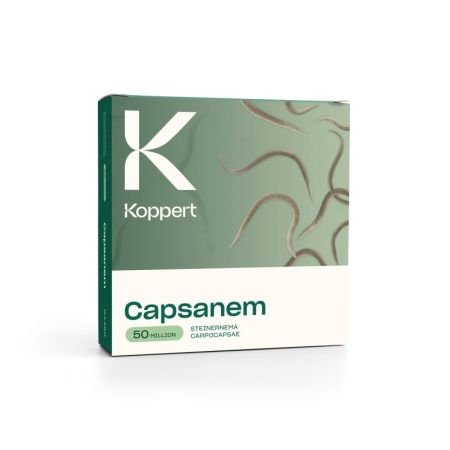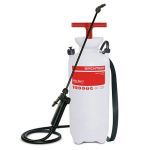We use cookies to make your experience better. To comply with the new e-Privacy directive, we need to ask for your consent to set the cookies. Learn more.
Leather Jacket Nematode (Capsanem)
Nematode for crane fly larvae/leather jackets (Entomopathogenic nematodes Steinernema carpocapsae). Tolerant of colder conditions. Covers an area of 50 -100m2. More details below.
Nematodes for crane fly larvae - leatherjackets
Covers an area of 50 - 100m2.
Leather jackets are the larvae of crane flies or daddy long legs. They can damage lawns and small plants, garden borders and vegetable plots by eating plant roots. They are often more numerous after a wet autumn, as damp conditions favour survival of eggs and larvae.
Crane flies emerge from the soil in huge numbers in the late summer, usually around August.They can live for several days but generally, mate and lay their eggs in the soil within 24 hours. These eggs form into larvae, or Leatherjackets. They live in the soil over the next year, burrowing deeper during the winter months before returning to the surface the following summer when they pupate and turn into crane flies. Then they mate, lay their eggs and the cycle continues.
- Leatherjackets have elongate tubular bodies, up to 4cm long. They have no legs or obvious head. They are grey or brown in colour with a waxy coat. Mostly you will find them just under the soil surface, but at night they are known to venture above ground.
- The problem can be exacerbated by birds and other wildlife digging up the lawn to eat the grubs.
The nematode works only on the larvae - not on the adult crane flies.
- The best time to use the nematodes is Autumn onwards when the larvae are busy in the ground. Entomopathogenic nematodes can be considered a cold weather nematodelate and will tolerate temperatures as low as 6°C.
-
Is a good idea to scarify the lawn and get rid of all thatch before using so that the nematodes have easier access to the soil.
Here are some important points to note -
- All the sieves in the equipment used must be removed to prevent blockages
- Do not expose the nematodes to direct sunlight
- Nematodes must be mixed continually to prevent them from sinking (also when spraying!)
- Spray the crop with water before and after application
- Keep the soil moist for the first two weeks after application
The product can be used both in container cultivation and in open field cultivation. Please note: in open field cultivation in dry weather, the ground must be sprayed with water before using the nematodes.
Can also be used against Shore flies larvae (Scatella sp.)
This is a live product. Please use by best before date on packet.
Application
Preparation
- Half an hour before preparing the product, remove the pack from the refrigerator and let it come up to room temperature (20°C)
- Break the contents of the sachet (250 million Heterorhabditis bacteriophora) into smaller pieces
- Use the entire pack and place the smaller pieces in a bucket containing five litres of water (at 15 to 20°C)
- Leave the bucket with the solution to stand for five minutes
- Then stir the solution until all the lumps have disappeared before transferring it to the spray tank. 10lt will cover approx 100m2.
- Use the spray solution straight away
Application and dosage:
- With a watering- can, sprinkler system, backpack spray unit or vehicle-mounted spray unit
- To avoid blockage, all filters should be removed
- Use a maximum pressure of 12 bar on spraying boom or pistol
- The spray nozzle opening should be at least 0.5 mm (500 microns)
- Continuous mixing should take place to prevent nematodes sinking to the bottom of the spray tank
Best working conditions for Nematodes
- The moisture content of the soil must be high
- Soil temperature between 5 and 30°C
- Nematodes are susceptible to ultraviolet light (UV): do not use them in direct sunlight
- Leaf applications should only be carried out in the evening to minimise the influence of UV light and to maximize moisture availability for the nematodes


